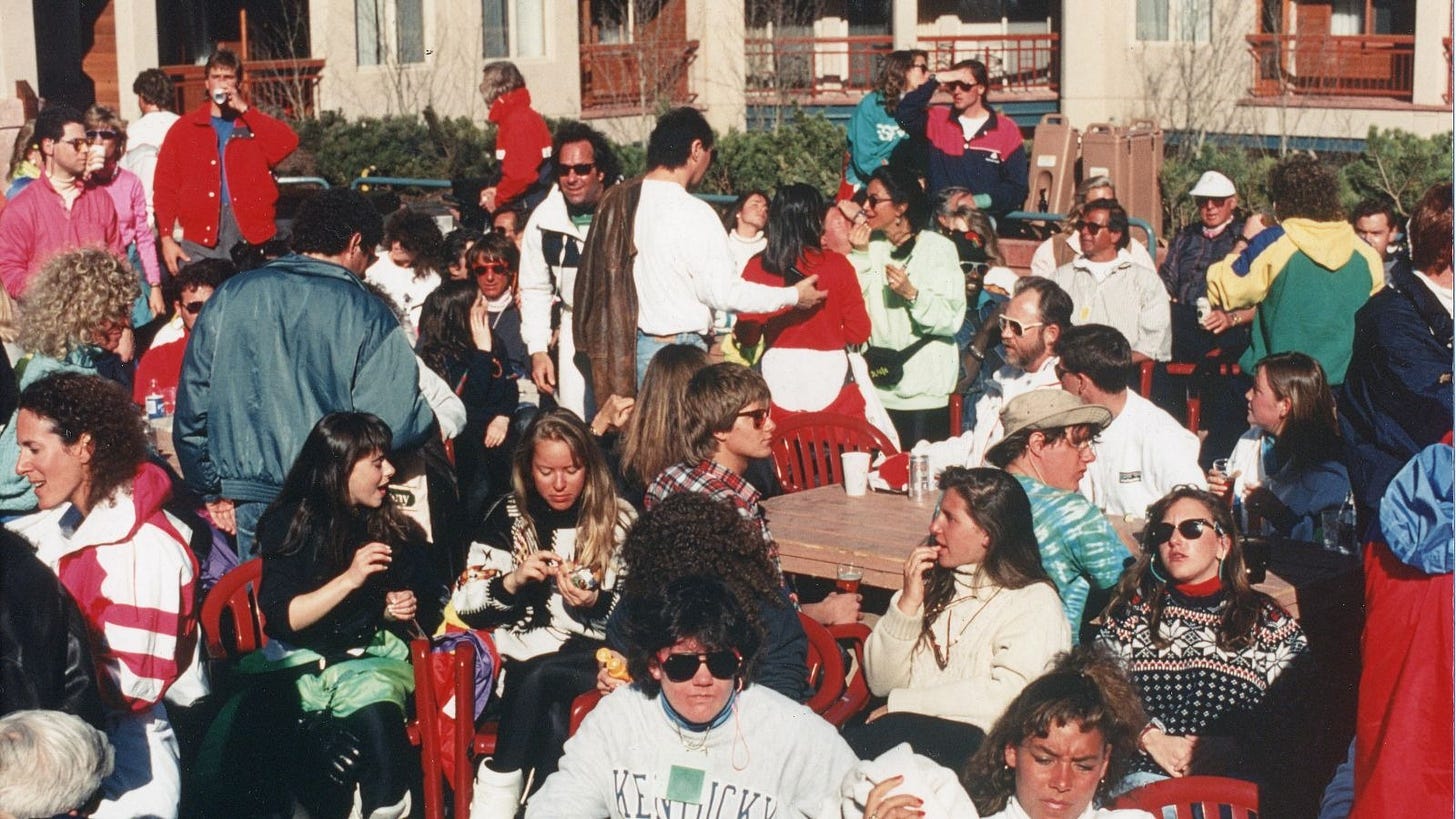May 15 Only: “Aspen” Caters to Skiers though Frederick Wiseman Documents More
The Frederick Wiseman restoration series continues at Webster University
The Frederick Wiseman restoration series continues at Webster University on Thursday, May 15, with “Aspen,” released in 1991. Just under two and half hours, it feels less dense and politically weighty than his four 1986 documentaries on disabilities and his 1990 ode to Central Park. Though Aspen is celebrated for its glorious skiing, nevertheless the film surrenders too much attention to downhill and, secondarily, cross country skiers. To be fair, this may be Wiseman’s astute critique of what Aspen has become, but the dominance of this footage becomes tiresome for viewers expecting Wiseman’s usual, more incisive contemplation of a place or topic.
I digress to repeat that, for new viewers of Wiseman’s work, awareness of this iconic documentarian’s signature style is crucial. He adds no voiceover narration or interpretative music, all of it emanating from the locations or individuals playing instruments in captured scenes. Subjects candidly interact with each other or appear alone without any direct engagement with the camera. Cuts from one scene to the next may occur without intermediary buffers or with brief transitional shots. In essence, though Wiseman edits hours and hours of footage, his unmediated immersion invites viewers to form their own conclusions about the subject matter so expertly presented.
“Aspen” opens and closes with a religious theme, perhaps prayers for the once idyllic town already inundated with tourists by 1991. Monks chant and pray in the first scene, a lecture on God followed by a song about “our Savior” concludes the film, the song continuing over the closing, extreme long shot of the Rocky Mountains and the brief credits. In between these framing shots, skiers swoop down and navigate various challenging runs, a ski school instructor holds forth, the Steamboat Springs Winter Sports Club holds a Super G race, some choose to snowshoe, and occasionally individuals take breaks at the outdoor ski café, a few dancing to music. The Aspen Mountain Patrol is on hand to investigate a problem and, to keep all these runs in top form, bulldozers groom the snow at regular intervals, both day and night.
Meantime, by contrast, meetings in the town include one on cosmetic surgery, another on conservation, and yet another about immigrants, specifically identified as Hispanics, with some participants sympathetic and some denigrating their behavior and living conditions. A guide leads boys and girls through a sanctuary, identifying behavior of ducks and geese and conservation success. At a dinner, talk turns to Göring, while a discussion by several middle-aged men tackles divorce, regarded by a few as a sin. Another scene finds students analyzing Flaubert’s short story “A Simple Heart” and debating pronounced disagreements One art teacher directs students in their painting assignment, evaluating the efforts at the conclusion. Later, at an art gallery, a female artist holds forth on her exhibited work. Elsewhere, athletes work out at a gym, lifting weights, running on a treadmill, swimming, dancing, playing squash or tennis.
All of these interspersed scenes reveal striking counterpoints to the primary skiing activity and sustaining businesses. Further establishing this distinction, in an implicitly scathing commentary, shots of window displays in the downtown area and a few women in extravagant fur coats walking the sidewalk bump up against the very few minutes illustrating Aspen’s mining heritage. In fact, in only one live action scene are miners with headlamps seen working in a claustrophobic, dark mine tunnel. The few abbreviated reminders of this legacy speak volumes about the transition to a place of play. Wiseman only briefly lets viewers decompress between the flow of scenes with shots of roads or landscapes, stitching past to present in jarring juxtapositions. Without a soapbox, Wiseman still speaks volumes about the world of “Aspen,” then and in 1991. “Aspen” screens at Webster University’s Winifred Moore auditoriumone time only, Thursday, May 15, at 7:00 p.m. that evening. For more information visit the film series website.




